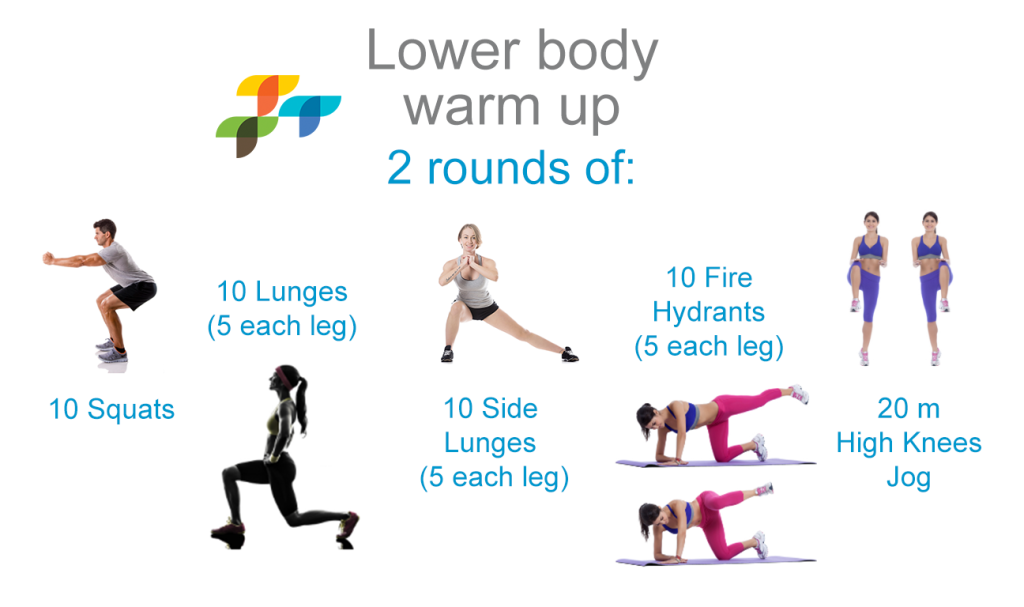
How To Properly Warm-up Before Your Workout
By Jaime Granchelli, PT, DPT
Yes, it matters. It’s actually kind of a big deal. If you’re not physically warm before you hit your workout, you’re not ready. Muscles don’t like to be asked to move and do work under load and tension when they are cold. Cold muscles also have a higher chance of being strained or even torn.
Why Stretching Isn’t Enough
What muscles prefer is to be warmed up gradually from smaller to bigger range. Kicking your foot up on a bench and hanging in a passive hamstring stretch for a few minutes isn’t going to cut it. Sure, this will help lengthen the muscle but simply gaining more range from sitting in a stretch doesn’t mean that muscle is geared and ready for dynamic movement. In order to achieve more range, your muscle has to relax itself and is technically shutting down. When you hold a stretch for a period of time without involving movement, you’re actually shutting your muscle down even more and goes against exactly what you’re trying to accomplish.
Furthermore, this relaxation of the muscle is shutting down it’s natural responses that are necessary for power and force generation. A 2014 Journal of Strength & Conditioning Research study found that 60 seconds of four different static stretches resulted in substantial decreases in jump height and power compared to not stretching at all. In another 2014 study by the Journal of Sports Medicine found that an upper body static stretching protocol negatively affected peak jump force. With all that said, sitting in a passive stretch after your workout is a great addition to your cool down routine since you will be done putting those muscles under load and going into “shut down mode”, so to speak, and it won’t be detrimental to performance and/or health of the muscle.
Customize a Warm Up Routine For Each Activity
So, how should I warm up for my walking program?… my triathlon training?… surfing? Does it matter?
Warming up doesn’t have to be fancy, but it should be deliberate. Start by easy walking, jogging, biking, or swimming. Then, gradually start to open up your stride or pick up the pace as you feel your body warming up and engaging. Once you’re warm, play around with all those bounty drills we did in P.E. class or high school or college sports: lunges, side lunges, squats, jumping jacks, fire hydrants, regular or knee push ups, soldier kicks, high knee jog, inch worms. These can and should cater to what exercise you’re about to perform, as well as, where you tend to be tight. If you know you are about to do a shoulder intensive workout, the shoulder and arm take priority over hip and leg drills. If you feel you have tight hips, make sure to do some drills that loosen them up. Lastly, depending on what sport you’re warming up for and what skill demands you may require, start honing into more sport/skill specific movements. Tap into muscle memory and get them activated.
Below is a lower body warm-up routine you can do before your next workout!
2 rounds of:
- 10 Squats
- 10 Lunges (5 each leg)
- 10 Side lunges (5 each leg)
- 10 Fire hydrants (5 each leg)
- 20m High knees Jog
